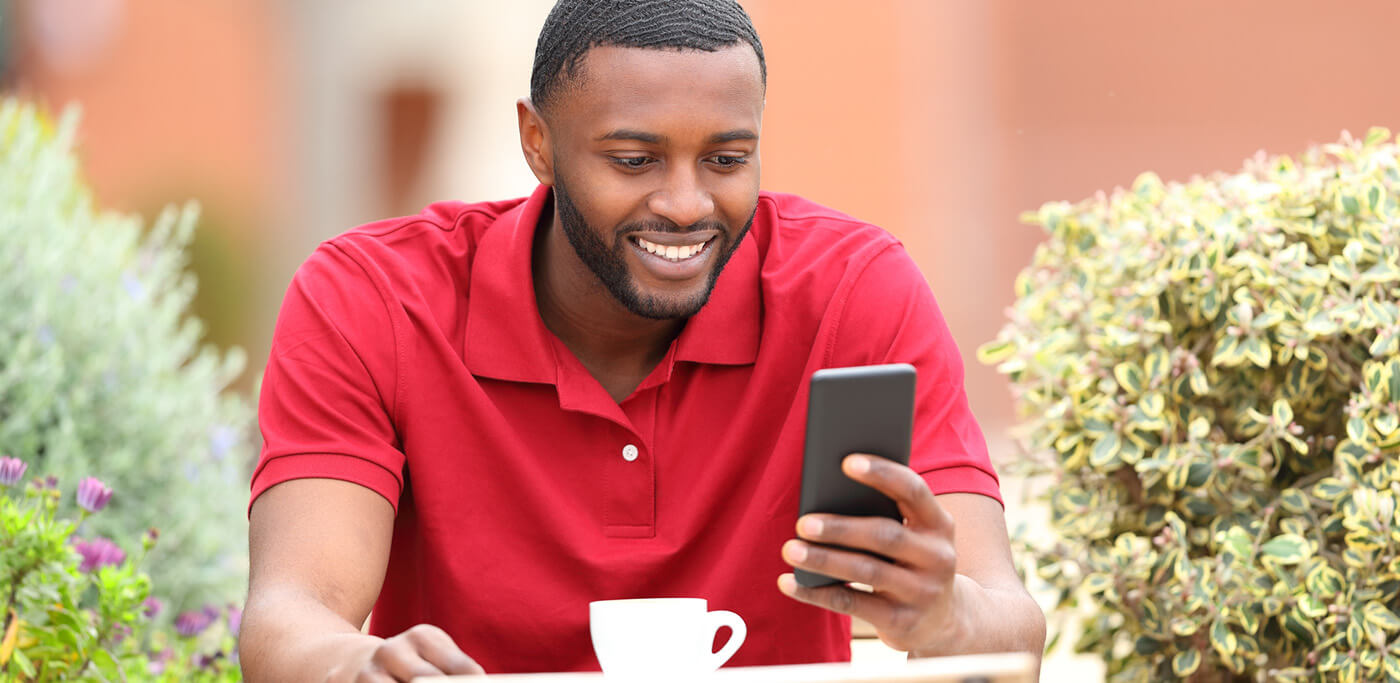Simply put, an advanced Marketing Automation platform can improve the value of your business. Many brands are still only scratching the surface of what can be achieved.
There is a real shift taking place in how Marketing Automation platforms operate. AI, Customer Data Platforms, Predictive Analytics and Behavioural Data… all factors being brought to bear by Marketing Automation platforms, that will help the marketer to create more relevant and timely campaigns, driving up performance, revenue and the lifetime value of the customer.
Quick reference
- What is marketing automation?
- What tools are used in marketing automation?
- What are the main benefits of marketing automation?
- Common email marketing automation examples
- How does marketing automation help with customer segmentation?
- How does marketing automation work with customer data?
- What does good marketing automation look like?
- How do customers expect brands to communicate with them these days?
- How AI and marketing automation work together
- What kind of predictive models does marketing automation offer?
- How to get the most out of your marketing automation platform
- When is the right time to invest in marketing automation?
- The marketing automation RFP process
- Making the right choice

What is marketing automation?
Marketing automation refers to the use of software and technology to automate and streamline marketing tasks and workflows.
The goal of marketing automation is to make it easier and more efficient for brands to reach and engage with customers and prospects, typically through email, SMS, social media, and other online channels.
Marketing automation helps brands:
- Target and personalise their marketing efforts
- Measure the effectiveness of their campaigns
- Improve their overall marketing performance
Some examples of marketing automation tasks include email marketing, social media retargeting, SMS marketing, customer segmentation, and campaign management.
Marketing Automation is the embodiment of ‘doing more with less’.
By automating communications and responses to predictable events, the marketer is able to free up time to focus on important tasks such as understanding the motives of their customers.
“We’re delighted with the increase in conversion on our post purchase and post quote journey with the addition of SMS. RedEye identified the gap in our customer journey and made the recommendation. It was far easier than I’d imagined to implement. I’m now looking forward to using SMS more often in our automated campaigns.”
Esme McQue, Email/CRM Marketing Executive, Magnet Trade
What tools are used in marketing automation?
Marketing automation software typically includes a variety of tools and features designed to support different aspects of the marketing campaign process.
These can include the following:
- Email marketing
- SMS marketing
- Push marketing
- Social media
- Campaign management and workflow builders
- Dynamic content editors
- Customer segmentation
- Personalisation and loyalty systems
- Reporting and analytics

What are the main benefits of marketing automation?
Scale and time saving
One of the main benefits of marketing automation is that it allows brands to scale their marketing efforts by automating repetitive and time-consuming tasks.
This frees up time for marketers to focus on:
- More high-level, strategic work, such as analysing data
- Developing new campaigns
- Refining marketing strategies
Personalisation
Marketing automation also helps brands personalise their marketing communications by using customer data to create targeted and highly customised, dynamic messaging.
For example, a brand might use marketing automation to send personalised emails to customers based on their purchase history or to display targeted ads on social media based on a customer’s interests.
Brands can be confident in the knowledge that the prospect or customer is receiving an optimised communication that will guide them to the marketer’s required goal.
Saves resource as complexity builds
Over time layers of automation are developed and complexity builds up, constantly achieving more with unchanged resources and budgets.
In doing so, the marketer is able to deliver more targeted and timely communications to more prospects and customers.
Invariably delivering improved engagement, conversion and revenue without spending a fortune to achieve this.
Tells you which campaigns are the most effective
Another benefit of marketing automation is that it can help companies measure the effectiveness of their marketing campaigns.
Marketing automation software includes analytics and reporting tools that allow brands to track the performance of their campaigns and understand which marketing strategies, campaigns and channels are most effective.
Helps improve the customer experience
As a brand’s marketing automation strategy matures, the software begins to control more of a brand’s direct engagements with prospects and customers.
As it does, it plays an increasingly central role in the customer experience with the relevance and value of those messages adding to the perception that the individual has of the brand.
And that Customer Experience will have an undoubted impact on other critical factors like customer loyalty. Building a personal relationship with the customer is one of the foundation stones of brand perception.

Common email marketing automation examples
Welcome emails
Brands can set up an automated email campaign to send a welcome message or journey to new subscribers. This could include information about the brand, its products or services, and any special offers or discounts.
Abandoned basket emails
If a customer adds items into their shopping cart but does not complete the purchase, brands can use marketing automation to send a follow-up email reminding them about the items in their basket and offering incentives to complete the purchase.
Re-engagement campaigns
A brand can use marketing automation to send targeted emails to inactive subscribers in an effort to re-engage them. These emails could include special offers or discounts, or simply provide valuable content in an effort to re-establish a relationship with the subscriber.
Nurture campaigns
Brands can use marketing automation to send a series of emails over time to nurture leads and educate them about a product. For example, a brand might send a series of emails introducing a new product, highlighting its features and benefits, and providing testimonials and customer reviews.
Back in stock campaigns
Brands can send an email to customers who have expressed interest in a product that is currently out of stock, informing them when the product is available for purchase again.
This encourages customers to complete a purchase when the product becomes available, and to maintain customer engagement and loyalty that may otherwise be lost if this task was undertaken manually.
Replenishment campaigns
Brands can use marketing automation to send out replenishment emails. This campaign sends an email to customers who have previously purchased a product, reminding them to re-order or purchase more of that product.
These campaigns are often used for products that need to be regularly replaced, such as consumables or perishable items. The goal of the campaign is to encourage repeat purchases and to ensure that customers do not run out of the product.
Transactional emails
Marketing automation is often used to send automated emails in response to specific customer actions, such as making a purchase or booking. For example, a brand might use marketing automation for the whole buying cycle including purchase, dispatch, out for delivery, delivered, returns and returns received.
“The pre-stay email is one of many testaments to that and keeps us on track to offering all of our customers a super personalised end-to-end customer journey. The impressive traditional KPI’s aside, it has been great to see the large volume of positive customer feedback.”
Senior eCRM Manager, Travelodge

How does marketing automation help with customer segmentation?
Marketing automation uses segmentation to personalise multi-channel campaigns by dividing the customer base into smaller groups based on shared characteristics or interests.
This allows brands to create targeted marketing campaigns that are tailored to the specific needs and preferences of each customer segment.
For example, a brand might segment its customer base by:
- Demographics (such as age, gender, or location)
- Behaviour (such as purchase history or engagement with the company’s website or social media channels)
- Interests (such as hobbies or lifestyle)
- Customer lifecycle stage (such as a VIP customer or lapsing customer)
Once the customer base has been segmented, brands can create targeted campaigns for each group. For example, using a basic gender segment, brands can send campaigns with a product in the hero image that specifically targets either the male or female segment to show the relevant image.
By using segmentation to personalise, brands effectively engage with customers, improving the overall performance of the campaign through increased click-throughs and conversions.
“We have been extremely impressed with the Redeye team and the expert knowledge they have shared with us since starting our partnership. This has really pushed us forward as a brand to make smarter decisions regarding our data, to look at how we use segmentation to target our different audiences and be able to implement a comprehensive email testing plan.”
Michelle Amiss, Email Marketing Manager, Bourne Leisure

How does marketing automation work with customer data?
Marketing automation can bring together customer data from multiple sources of siloed data into a single platform. This is often named the single customer view (SCV).
A SCV is a holistic view of a customer that includes all of the data and information that a company has about that customer, including demographic data, purchase history, engagement with the company’s marketing efforts, and any other relevant information.
Marketing automation and its SCV then work together to create a more comprehensive and personalised marketing experience for customers.
For example, if a brand has a customer’s purchase history stored in its SCV, it can use marketing automation to send personalised product recommendations or cross sell emails based on that data.

What does good marketing automation look like?
Good marketing automation can be characterised by these key attributes:
Alignment with marketing goals
A good marketing automation strategy should be aligned with the overall marketing goals of the company. This means that the marketing automation efforts should be focused on supporting the achievement of these goals, rather than being implemented for their own sake.
Personalisation
Good marketing automation is personalised and tailored to the needs and interests of individual customers.
This might involve segmenting the customer base and creating targeted marketing campaigns for different groups or using customer data to create personalised messaging and recommendations.
Ease of use
It should be easy for marketers to use and set up. This might involve having a user-friendly interface, clear documentation, and responsive customer support.
Integration with other systems
Being able to integrate with other systems and tools that the company uses, such as CRM, CDP, and analytics platforms is a key requirement of good marketing automation.
This will help ensure that data is being shared and used effectively across different departments and teams.
Data-driven decision making
Marketing automation should be based on data and insights, rather than relying on assumptions. This might involve using analytics and reporting tools to track the performance of marketing campaigns and make data-driven decisions about how to optimise and improve them.

How do customers expect brands to communicate with them these days?
Customers expect brands to provide them with a personalised and relevant experience.
This might involve receiving targeted and customised messaging and recommendations based on their interests and needs, as well as the ability to easily interact with and engage with the company through various channels (such as email, social media, and the company’s website).
Check out our two blogs on data-driven personalisation and contextually-driven personalisation for more ideas.
Customers also expect a seamless and unobtrusive experience when they give brands their personal details.
This means that they don’t want to feel like they are being bombarded with irrelevant or spammy messages, and they don’t want to feel like a brand is being disruptive to their experience.
Finally, customers expect brands to fully respect their privacy and data security. This means that they expect their personal data to be handled in a responsible and transparent manner, and that their privacy rights are upheld and fully comply with GDPR.

How AI and marketing automation work together
Artificial intelligence (AI) can be used in marketing automation in a number of ways, including the following:
Personalisation
AI can be used to analyse customer data and personalise marketing messages and content in real-time. For example, an ecommerce brand might use AI to recommend products to a customer based on their purchase history or to display targeted ads on social media based on a customer’s interests.
Optimisation
AI can be used to optimize marketing campaigns in real-time by analysing data and making adjustments to improve the performance of the campaign.
Chatbots
AI-powered chatbots can be used to engage with customers in real-time and provide personalized support and recommendations.
Predictive analytics
AI can be used to analyse data and predict customer behaviour, allowing brands to anticipate customer needs and tailor their marketing messaging accordingly.
Today, predictive analytics is having the largest impact on marketers who wish to effectively use customer lifecycle marketing tactics.
Predictive Analytics is pretty much what it says on the tin. It is the use of data, statistical algorithms, and machine learning techniques to identify patterns in data that indicate how likely it is that someone will perform a specification.
These models make it possible to predict the probability of a specific prospect becoming a customer. They can also predict a multitude of different outcomes, such as purchase, churn, optimal discount, best channel, timing and content.
The key here is to remember that predictive models will only be as good as the data you provide while creating them. So, if there are mistakes in your data, or there’s a high level of randomness, it won’t be able to make accurate predictions.

What kind of predictive models does marketing automation offer?
Predictive models can be used to address and alleviate concerns marketers need to overcome to meet their CRM objectives.
I need to convert more prospects
What if you knew who was teetering on the brink of their first purchase? How would you change the way you targeted them? The first purchase conversion model informs you when your prospects are ready to buy and become your newest customer.
I need more repeat customers
A database full of one-off purchasers means a lack of loyal customers and a lack of profit. Brands tailor their messaging based on the insight from the multi-purchase model, which leads to more purchases.
I need fewer unsubscribes
Every brand loses money when a customer unsubscribes from their emails. Brands can greatly improve their unsubscribe rate using in-depth information about their customers with the unsubscribe model.
I need to reduce my churn rate
What would you do if you could find out which customers were likely to churn, even before they did? Brands can use this important information to target customers on the verge of lapsing. The results achieved are amazing from the customer churn model.
I need to increase my VIP segment
What would it mean for your marketing if you could predict who your VIP customers would be? An increase in your VIP segment means an increase in engagement. Brands using the VIP model will go along way by increasing their customer lifetime value.
I need to improve my deliverability
Brands need to continually analyse how customers interact with email campaigns to predict their future engagement. The frequency engagement model will tailor the frequency of campaigns to maximise engaged customers and reduce churn, unsubscribes and spam.
I need to identify my customers with the highest lifetime value
Brands can accurately predict which customers carry the highest spending potential and secure or grow their future value through dedicated personalised multi-channel campaigns with the predicted CLTV model.
I need to know when my customers are ready to buy again
Brand can accurately predict every customer’s individual buying behaviour and target them at the optimum time to drive product replenishment with the Predictive Replenishment model.
“Since applying the predictive churn model onto our customer database, we have been overwhelmed with the success in not only dramatically reducing customer churn but also increasing sales from those who would have previously lapsed by 414.6%.”
CRM Manager, allbeauty
Learn more about predictive analytic models here

How to get the most out of your marketing automation platform
Here are the key things to consider to find out if your brand is getting the most out of marketing automation:
Clearly define your marketing goal
Before you start using your marketing automation software, it’s important to have a clear understanding of what you want to achieve with your marketing efforts.
This will help you select the right software and features and ensure that your efforts are aligned with your overall business goals.
Integrate your marketing automation software with other systems
To get the most out of your marketing automation software, you’ll want to integrate it with other systems that you use, such as your CRM, ecommerce platform, and business analytics tools.
Using a provider that can build custom integrations to the software you use is essential to get the best out of marketing automation.
Use data and analytics to drive your decisions
Use this data to make data-driven decisions about how to optimize and improve your marketing efforts. A comprehensive reporting suite where you can deep-dive into customer segmentation is crucial.
Keep testing and experimenting
Marketing automation allows you to test and experiment with different marketing campaigns and tactics. Keep testing and experimenting to see what works best for your business and your customers.

When is the right time to invest in marketing automation?
The right time to invest in marketing automation will depend on a number of factors, including the size and complexity of your business, your marketing goals, and your available resources.
That being said, here are a few signs that it might be time to consider investing in marketing automation:
Your marketing efforts are becoming too time-consuming
If you find that you and your team are spending an excessive amount of time on repetitive, manual marketing tasks, it might be time to consider marketing automation to help streamline your workflow.
You have a growing, diverse customer base
Marketing automation can be particularly useful for brands with a fast growing and diverse customer base, as it allows you to segment your audience and personalise your marketing efforts for different groups of customers.
You’re not seeing the results you want
If you’re not seeing the results you want from your marketing campaigns, marketing automation can help you optimise and improve the performance of your campaigns through many of the ideas discussed in this article.
You need to scale
Marketing automation can be a powerful tool for marketers wishing to scale their marketing efforts, as it allows you to automate repetitive tasks and focus on more strategic, high-level work.

The marketing automation RFP process
An RFP, or request for proposal, is a document that outlines the requirements and specifications for a product or service that a company is seeking to purchase. Consider the following steps when looking to choose the right marketing automation provider for you:
Identify your needs
Before you start the RFP process, take some time to identify your brand’s specific needs and requirements for marketing automation. This might include:
- The essential features and functionality you need
- The size of your customer base
- Your budget
- The channels you need to send from
- What type of segments you need to build from your data
- Your martech stack and how the platform will interact
- Your customisation requirements
- The onboarding process
- The deliverability warm-up process
- Any other relevant factors specific to your brand
Write the RFP
Once you have a clear understanding of your needs, you can use this information to write the RFP.
Be as specific as possible in outlining your requirements and make sure to include any relevant details, such as the size of your customer base, your budget, and your timeline for implementation.
Review the responses
Once you have sent the RFP to a number of different marketing automation providers (about 4-5 is a good number), review the responses to see which provider best meets your needs.
You may want to consider factors such as the provider’s reputation, the features and functionality of their software, their pricing, and their customer support.
Demo the software
Once you have narrowed down your options, it can be helpful to see the marketing automation software in action by requesting a demo from the shortlisted providers.
This will give you a better sense of how the platform works and whether it is a good fit for your business.
Make a decision
After reviewing the responses to the RFP, demos of the platform, and any other relevant information, it’s time to make a decision.
Choose the marketing automation provider that best meets your needs, budget and organisation fit.
Above all else you’ll need to feel confident with the support and service levels the provider can give your brand for scaling business growth and offering you specialist marketing automation advice.

Making the right choice
While marketing automation can be a powerful tool for improving marketing performance, it’s important to use it in a way that aligns with your brand’s overall marketing strategy and goals.
Not all marketing automation providers offer the same features, organisation fit or flexibility to offer customised integrations.
It’s important to carefully plan exactly what you need from your technology provider before signing up for a service that may not match your ambitions.
“We knew marketing automation was the answer to offering our customers a more personalised experience, but we didn’t have the expertise inhouse to start it from scratch ourselves. We chose RedEye as our partner as their team became our team enabling us to grow at a faster pace.”
James Edmonds, Managing Director, Hayloft
Enjoyed this article? Sign-up to receive updates




